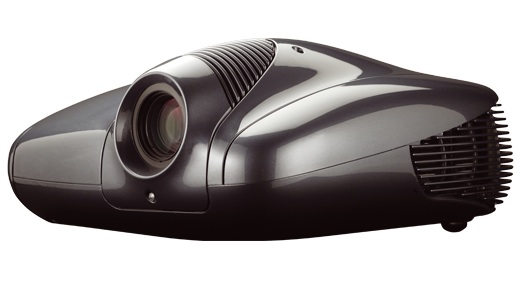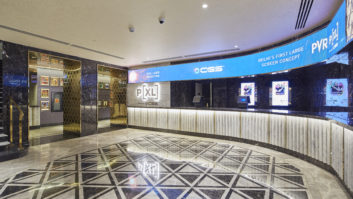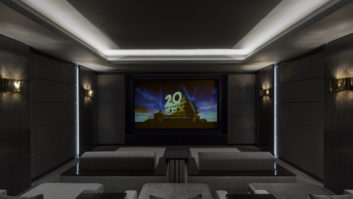
If the projector market has evened out in terms of image quality – which is now almost universally very high, certainly by comparison with what it once was – and has progressively diversified to serve the specific needs of a range of sectors, it also witnessed something of a remarkable transition in terms of price. Excellent projectors can now be bought for a very few hundred pounds, euros or dollars – compared to the thousands they once cost – and that has, increasingly, brought them to the attention of consumers – especially as staying in has become the new going out.
Few consumers, however, are seriously looking at the SIM2 Superlumis, with its eye-watering price tag in the UK of some £37,000. Announced in November last year, it is a 3-chip DLP-based projector of which one reviewer said that it featured “unbelievable, cinema-grade picture quality”. More typical of the high end of home cinema is the JVC DLA-X900R. Featuring JVC’s own D-ILA technology – a close cousin of Sony’s SXRD technology – it is still the price of a very small family car.
What can a customer expect, though, from a high-end home cinema projector at this level of the market? In the case of the Superlumis: brightness of up to 5,000 lumens, a choice of two lens types that maximise either brightness or contrast in order to fit the projector to the ambient lighting environment, a range of throw ratios and substantial connectivity. The DLA-X900R offers brightness of 1,300 lumens, and native contrast ratio of 150,000:1 (with so-called ‘dynamic contrast ratio’ of 1,500,000:1).
For the more typical home cinema enthusiast looking for a more engaging experience than that offered by a large plasma or LCD screen, there is plenty of choice – not least, for example, from the online store of their favoured supermarket. At the low end, the difference between a home cinema projector and a boardroom projector is largely about market positioning: even the provision of an HDMI input can be expected in a business projector, given the prevalence of video in today’s corporate world. One company that has developed a broad range of home entertainment projectors is Optoma. The Themescene HD83 – at the top end of Optoma’s offering – delivers 1,600 lumens at a contrast ratio of 50,000:1. Almost silent in operation at 22dB – a key consideration in the confines of a domestic environment – it features two HDMI inputs as well as VGA and composite, and the triggers necessary to integrate it within a wider home automation system.
There is also a growing market for gamers – both PC and console – looking for a more expansive, immersive experience in which their entire field of view is occupied by, say, exploding fighter aircraft. For this class of user, there is rather less interest in absolute picture quality and more in input lag times… Epson markets no fewer than five projectors specifically aimed at gamers, with the EH-TW5200, for example, providing a ‘fast mode’ for more responsive gameplay.
And finally, no discussion of consumer projectors would be complete without at least a passing mention of pico-projectors – with their average brightness of 50 lumens, and available for less than £100 – which innovative manufacturers are beginning to incorporate into a range of end use devices including cameras and smartphones.
It’s pico-projectors, though, that in some ways are most representative of how far we’ve come since the InfoComm Shoot-Out. Not in terms of image quality (although they’d have probably fared pretty well 20 years ago…) but in terms of the innovative ways manufacturers are applying technology to bring affordable projection to new classes of user and that look likely to safeguard the future of projectors for many years to come.







